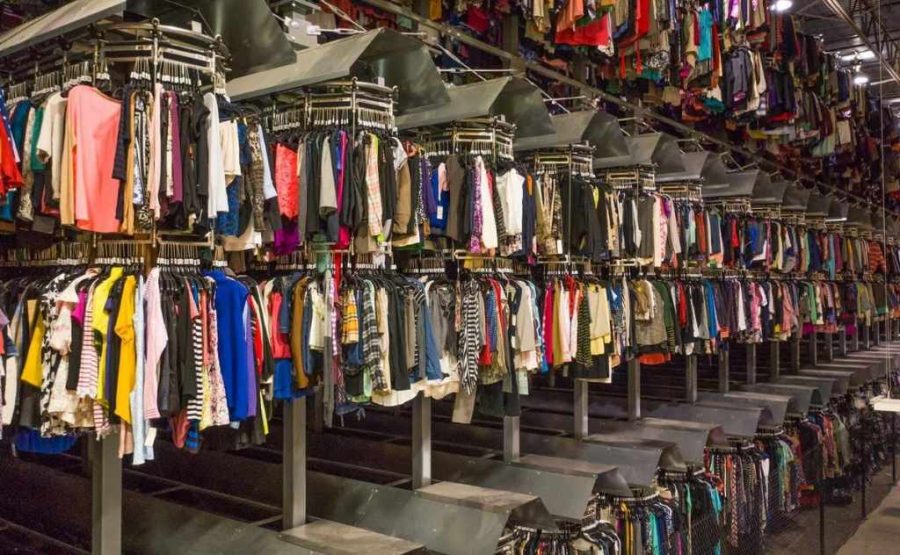Companies such as H&M, Zara and Shein mass-produce cheap, trendy clothing. Clothing brands like Shein have been accused of stealing from small designers like Mariama Diallo in the past (Natalie Michie, 2021). This demonstrates how significant companies turn culture into a commodity for profit and distribution (Adorno, 2001). This, in turn, is creating standardised cultural products that do not allow creativity or expression. TikTok facilitates this as influencers on the app create fashion trends, such as the leopard print clothes trend, which even I have fallen into the trap of buying; these trends then allow clothing brands to all reproduce the same item of clothing.
The clothing brands will follow what each other does as what is popular in another store will also sell in theirs; this means every store ends up having similar clothing, proving that Asorno’s idea can still be related to today. However, in today’s culture, consumers have many options to choose from, meaning their options are open, and consumers have free choice to be as creative as they want with what they wear. However, most choose a mainstream style, resulting in the wearing of mass-produced clothes and less variety in clothing styles.
Social media is a big part of creating trends that fast fashion will benefit from, as trends on apps like TikTok tend to go in and out quickly. This makes consumers want cheap clothes as they may only wear them briefly. This also negatively affects the environment, but consumers ignore its impact as they are distracted (Adorno, 2001). This means consumers’ interests are focused on buying clothes, ignoring other aspects that happen due to their consumerism. This also leads to less individual expression as viewers are partaking in trends, which results in people wearing similar clothing.
However, more recently, consumers have become more conscious, going against the idea that they are distracted, as consumers are becoming more aware. Influencers are now starting to promote second-hand shopping to fight against fast fashion brands, proving how consumers can choose to be conscious of their decisions.
Consumers are always orienting themselves according to the unity of production ( Durham, M.G. and Kellner, D. 2012); this means in society, the goal is to produce and sell as there will always be buyers, and this creates a cycle of buying and selling clothes that will never end.
In conclusion, clothing brands are ruining individual expression due to the mass production of clothing and trends that result in every clothes store having the same clothes. This results in less creativity as they are massive companies that control a significant portion of the market; for example, Bershka, Pull and Bear, and Stradivarius are separate clothing stores owned by the same company. This means the products being produced will all follow a similar trend as one person is in charge of making the final decisions, decreasing the creativity of clothing items.
However, in a modern society, those ideas might not be current as many independent businesses sell clothing, giving consumers freedom with what they choose to wear. Consumers can choose where they shop, although this choice may be an illusion as many people can not afford independent artists, which results in consumers not expressing themselves as they want to as they do not have the means to.
Reference:
Michie, N. (2021) Shein accused of using stolen designs – fashion magazine, Shein Accused of Stealing From Small Designers ŌĆö Again. Available at: https://fashionmagazine.com/style/shein-stolen-designs/ (Accessed: 19 October 2024).
Adorno, T.W. (2001) The Culture Industry. London, NY: Routledge.
Durham, M.G. and Kellner, D. (2012) Media and Cultural Studies: Keyworks. Malden, MA: Wiley-Blackwell.


I liked how you pointed out how consumers are trying to shop more consciously. But, it is so difficult because fast fashion brands make it so easy to buy from them. They are always on trend, cheap, and usually are delivered quicker.
Really interesting post! I really enjoyed reading your post and think its great that you chose such a prominent issue to centre your post around. I think due to the fast pace of fashion and trends that many people obvisouly do result in buying items from unethical places like Shein which obviously are cheaper than the more sustainable/independent brands especially younger people who may not have the financial flexibitly in order to allow them to both stay ‘trendy’ in terms of what they wear while also ensure they are buying clothes sustaianbly and ethically.
This post provides a good critique of the impact of fast fashion on personal expression and the homogenization of style in today’s culture. Your examples of companies like Shein and Zara effectively illustrate how these brands commodify trends and stifle creativity by producing standardized products. The connection you make between the influence of social media on trends and AdornoŌĆÖs concept of the ŌĆ£culture industryŌĆØ is insightful and highlights the cycle of trend-based consumerism. Your conclusion effectively captures the dilemma consumers faces who want individuality but often find themselves constrained by affordability and available market choices.